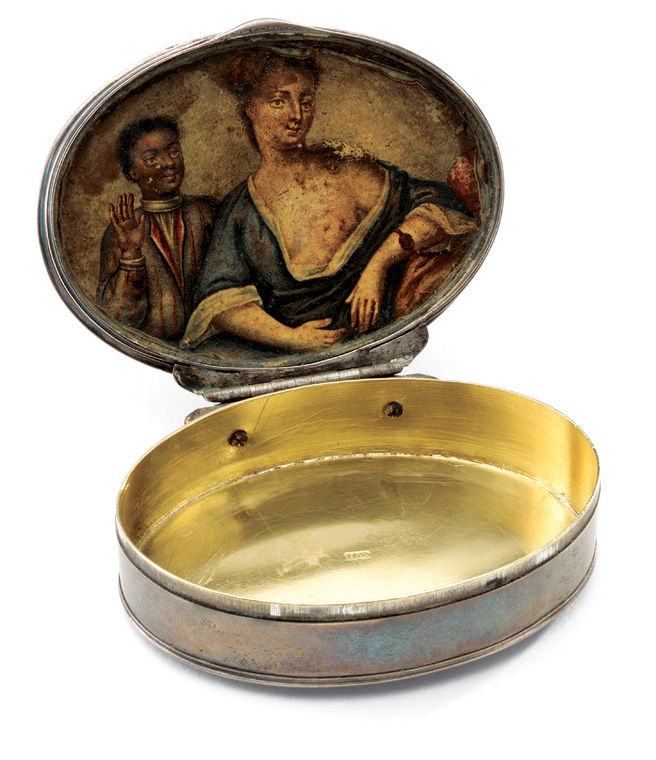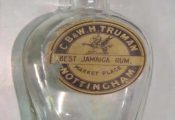This object is a small silver box, from around 1740, for snuff (powdered tobacco), which was inhaled through the nose from a ‘pinch’ taken from the box between the thumb and forefinger. The image on the inside of this snuff box is typical of the mid-18th century. It shows a wealthy woman and her servant, who may have been enslaved. African servants were regarded as status symbols in Europe in the 17th and 18th centuries. It was not uncommon for young boys to be taken from their families to become servants or ‘footmen’ in the homes of the wealthy.
During the 18th century it was usually only members of the middle class or aristocracy who had their portraits painted. African servants were included in portraits as symbols of the wealth and importance of the families they served. They were not portrayed as individuals in their own right, but as possessions.
The boy portrayed in this image may have been a slave brought to Britain from the Caribbean by a plantation owner and his family.
© National Maritime Museum, Greenwich, UK
Accession reference: National Maritime Museum, ZBA2452


